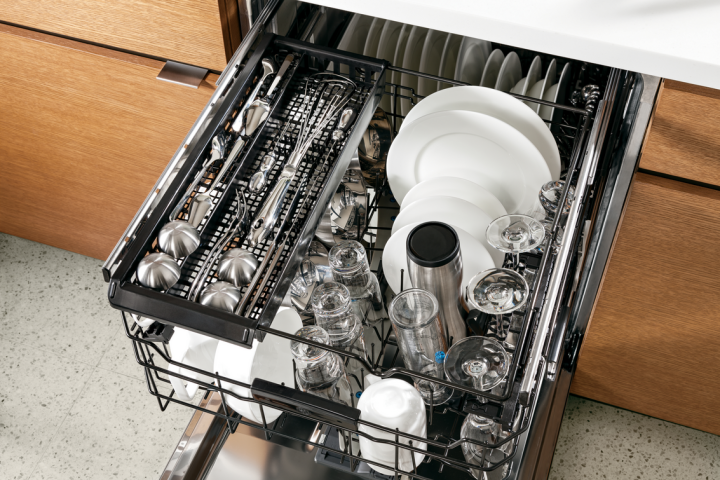
While every other appliance manufacturer out there is clamoring to pack their machines with Wi-Fi connectivity, text-based commands, and all manner of other unnecessary technologies, GE instead decided to outfit its new line of dishwashers with something far more useful – a third rack.
Built in to the company’s new Cafe and Profile dishwashers, the new third rack is comprised of two separate trays that can be repositioned or removed entirely. The design is intended to give users a better space to accommodate cutlery and other long, flat kitchen utensils, thereby freeing up more space in the bottom two racks for other dishes.
Additional features of the new Café and Profile series dishwashers include:
- GE’s most advanced wash system with 102 cleaning jets and reversing quad-blade wash arm
- A total of 16 dedicated bottle wash jets integrated into the top rack to tackle the inside of hard-to-clean containers
- Variable pressure jets that spray at 100 percent force for some spins, but at 60 percent for other spins, so different areas on the dishes are hit with water
- A 40-decibel sound rating that is one of the lowest in the industry and an LED status light on the door allow consumers to see—not hear—where the dishwasher is in its cycle
- Cabinet-depth flush installation and a stainless steel interior for a true built-in look and seamless inside appearance
- An LCD control panel to enhance the sleek overall look
In the future, we hope more manufacturers will follow GE’s lead and place a bigger focus on good, functional design instead of filling machines with gimmicky high-tech features of little redeeming value.
The Café and Profile dishwashers are available now for $1,699 and $1,599, respectively. Find out more here.
Editors' Recommendations
- How to clean a washing machine
- Best Abt Black Friday GE appliance deals: Ranges, microwave ovens, and more
- GE Appliance’s UltraFresh front-load washers tackle germs and odors




